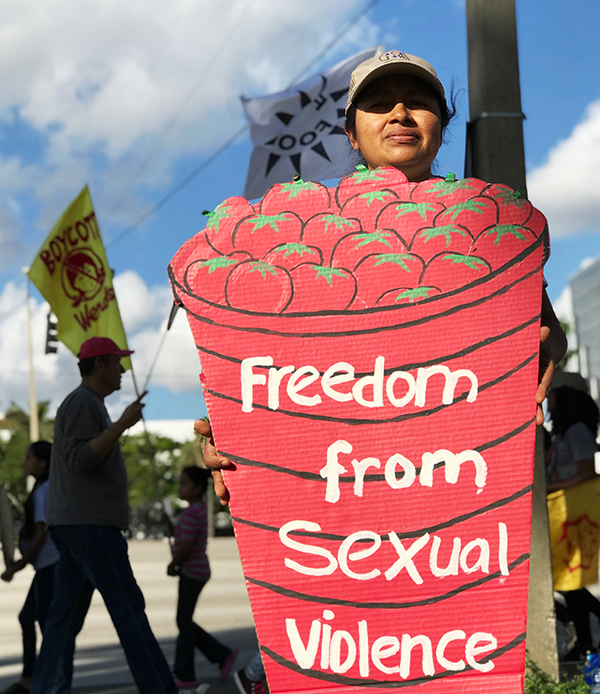
Law at the Margins Associate Editor Shahana Hanif attended a four-session, 100-minute speed course led by NYU professors Daniel Altschuler, Reverend Noelle Damico, Jamila Brown, and Linda Lausell-Bryant on the how to of effective activism, including the skills needed in nonviolent organizing, advocacy, and direct actions.
Here are three lessons learned that will support your participation in resistance movements as we fight to protect our neighbors and envision better futures.
KNOW THE DIFFERENCES BETWEEN ORGANIZING, MOBILIZING AND DIRECT ACTION PLANNING
The above buzz words are often used synonymously or without context. During her presentation Into the Streets in Civil Resistance: Engagement, Mobilization, and Action, Reverend Noelle Damico, NYU Wagner Adjunct Assistant Professor of Public Service and Senior Fellow at the National Economic and Social Rights Initiative, spoke extensively on what is required when organizing, mobilizing, and direct action planning.
Building relationships is key in organizing. Rev. Damico highlighted the necessity to create educational and campaign materials in “different styles for different groups.” Questions to think about when preparing materials include: which languages are spoken in the community? Which faith-based centers exist in the neighborhood and how can faith leaders be called in to said campaign? Once the outreach materials are developed, center one-on-one, in-person visits for engagement and conversations about the campaign. Share these materials on a website where folks can continue to receive updates about the campaign, access resources, register their support, and take action. Building lasting relationships requires regular follow-up with the community.
Mobilizing brings together or collectively gathers key communities for a specific action. To mobilize, first identify participants: who are impacted communities and allies? Early contact and information, even something that is a simple save the date message, are crucial in forming the backbone of an action. Utilize phone calls, a website, social media, and registration pages with details about the action and expectations for participants. Confirm participation by checking in periodically and relaying information pertaining to the length of action, accessibility, and child care if available. Be sure to organize the base to invite others by having them ask: how many people can you bring with you?
Direct action planning is the nuts and bolts of organizing an effective action to ensure smoothness. This requires specifying the logistics of the event including the route/site, time, timings and order of program or speakers, rest stops, food, sleeping arrangements, bathrooms, transportation, laundry, and parking. Have a medical team or an emergency plan that includes an onsite first aid kit and on-call medical professionals if needed. Some action sites involve needing a police permit. If so, do this early and designate a point person or volunteer who will serve as a police liaison. In addition to a police liaison, be sure to incorporate an identifiable security team. If your group is planning a civil disobedience action, provide prior or onsite training, jail preparation, a communications plan, and if needed, bail funds.

LEARN TO COMMUNICATE WITH THOSE IN OPPOSITION
Linda Lausell-Bryant, Clinical Assistant Professor, NYU Silver School of Social Work examined the question: do you have the capacity to reach out to those with whom you do not agree? This focus is especially useful because activism and organizing require conversations, hard and digestible conversations in order to move past divides and biases. In her talk, she assigned the speaker to create an environment for conversation by using one’s position of relative power and privilege to step into and raise difficult questions and conversations. This requires practice getting comfortable with elements of one’s own talk points (the historical and present-day advantages and challenges) to share more authentically. Authentic conversations also involve speaking the same language. This is not just a reference to the literal different languages that are spoken, but even within the same language. Are you using academic jargon? Are you speaking outside of academic jargon? How do you truly engage with someone if the language you use is not on the same plane?Her strategies for effective communication put onus on reflecting back on the hard conversation and checking for accuracy, expecting some discomfort, risking vulnerability, practicing active listening, and to avoid hiding daggers in follow-up questions. Instead of “Tell me more…I want to understand how you can possibly believe such a stupid thing” try, “Can you tell me more about your beliefs, your hopes?”
STRIVE FOR INTERDEPENDENT LEADERSHIP
In his presentation on Developing a Strategy of Protest: Target, Demand, and Power, Daniel Altschuler, NYU Wagner Adjunct Assistant Professor of Public Service and Managing Director of Make the Road Action, concluded by sharing a sobering message on how leadership should be framed and developed within movement spaces. He stressed the importance of moving away from individualized or independent leadership styles (“I’m the leader”) and rather, build Interdependent Leadership where folks are committed to a shared responsibility in the campaign efforts through acts of leadership, transparency, and accountability.
Read the extensive notes here. Learn more about the program here.





Thanks for sharing.